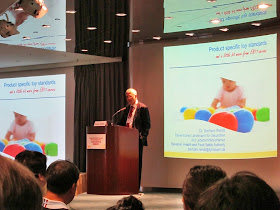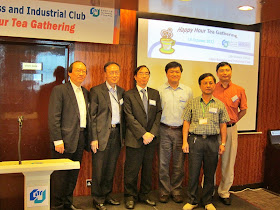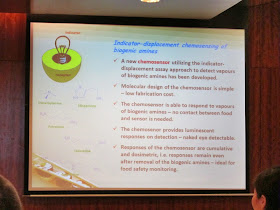The Executive Study Group seminar was organized by An Executive Study Group under the Chinese University of Hong Kong (CUHK) and the Hong Kong Science and Technology Parks Corp (HKSTPC). The October topic named “Leadership Strategy – How to Change the Old Mindsets of Your People” was held on 26 Oct 2012.
In the beginning, Dr. Lee said that more and more cross-functional team cooperation presented in business world and new generation employees showed little tolerance for unquestioned authority. People don't just ask "What should I do?" but "Why should I do it?". To answer this question is to "Persuade" your employee to do it. However, many business leader found it difficult and time-consuming. Dr. Lee quoted the statement from Mr. Lawrence Bossidy (CEO, AlliedSignal) to explain this phenomena.
A logical approach to change people's mindsets are discussed. Dr. Lee said the constitutes effective persuasion was a Learning and Negotiating Process. Then he explained "Dialgue" happened before and during the persuasion process and it was a form of learning. The Dr. Lee quoted Prof. Jay A. Conger (Marshall School of Business) statement "The best persuaders not only listen to other but also incorporate their perspectives into a shared solution."
The second part was "Four Strategic Steps". There were "Establish Credibility", "Frame for Common Ground", "Use Vivid Language and Compelling Evidence (Tell Story)" and "Connect Emotionally".
Step 1. Establish Credibility
Dr. Lee asked us don't overestimate our own credibility. There are two sources of Credibility included "Expertise" and "Relationship". The following items explained how to fill in the Gaps of Expertise and Relationship.
To achieve High Levels of "Expertise"
- Outside Sources of Information (e.g. Respected business or trade periodicals, lectures by experts, etc.
- Pilot Project (e.g. To demonstrate on a small scale your expertise and the value of your ideas)
- Learning by Education or Participation (e.g. Through formal or informal education, conversations with knowledgeable individuals)
- Leveraging of Professionals (e.g. Hire someone industry consultant to bolster your expertise)
To establish Strong People "Relationship"
- One-on-one meetings (e.g. To meet all key people you plan to persuade)
- Involving Like-Minded Coworkers
Step 2. Frame for Common Ground
Dr. Lee use McDonald Franchisee as an example to explain Win-Win situate to change the menu individual items to be package items. And he quoted Prof. Jay A. Conger statement that "In some situations, no shared advantages are readily apparent. In these cases, effective persuaders adjust their positions."
Step 3. Use Vivid Language and Compelling Evidence (Tell Story)
Dr. Lee said an effective persuaders used language in a particular way such as stories and picture. Then he quoted Prof. Jay A. Conger statement again where "Numbers do not make an emotional impact, but stories and vivid language do."
Step 4. Connect Emotionally
Good persuaders are aware of the primacy of emotions and are responsive to them in two important ways below:
- Showing Their Own Emotional Commitment
- A Sense of Audience Emotional State
Prof. Jay A. Conger said that "Without this demonstration of feeling, people may wonder if you actually believe in the position you're championing".
The third part was "The Force of Persuasion". Persuasion is not for convincing and sleeting but learning and negotiating. It is not only in logic side but also in Art. Using McDonald's bundled food pricing plan as an example again, they established credibility of expertise by research reports and pilot project, it demonstrated win-win situation among franchisees. Finally, they had emotional ending by using Founder's Old Letter.
After that, we had an exercise to cross two of the most difficult persuasion steps and pick one of the easiest persuasion step for discussion.
Reference:
The Centre for Logistics Technologies and Supply Chain Optimization, CUHK: http://www.logitsco.cuhk.edu.hk/
HKSTP - www.hkstp.org
























































